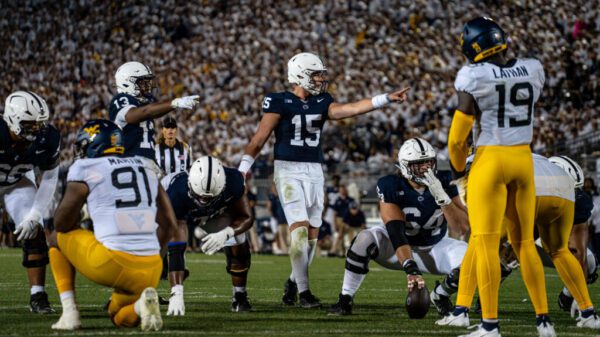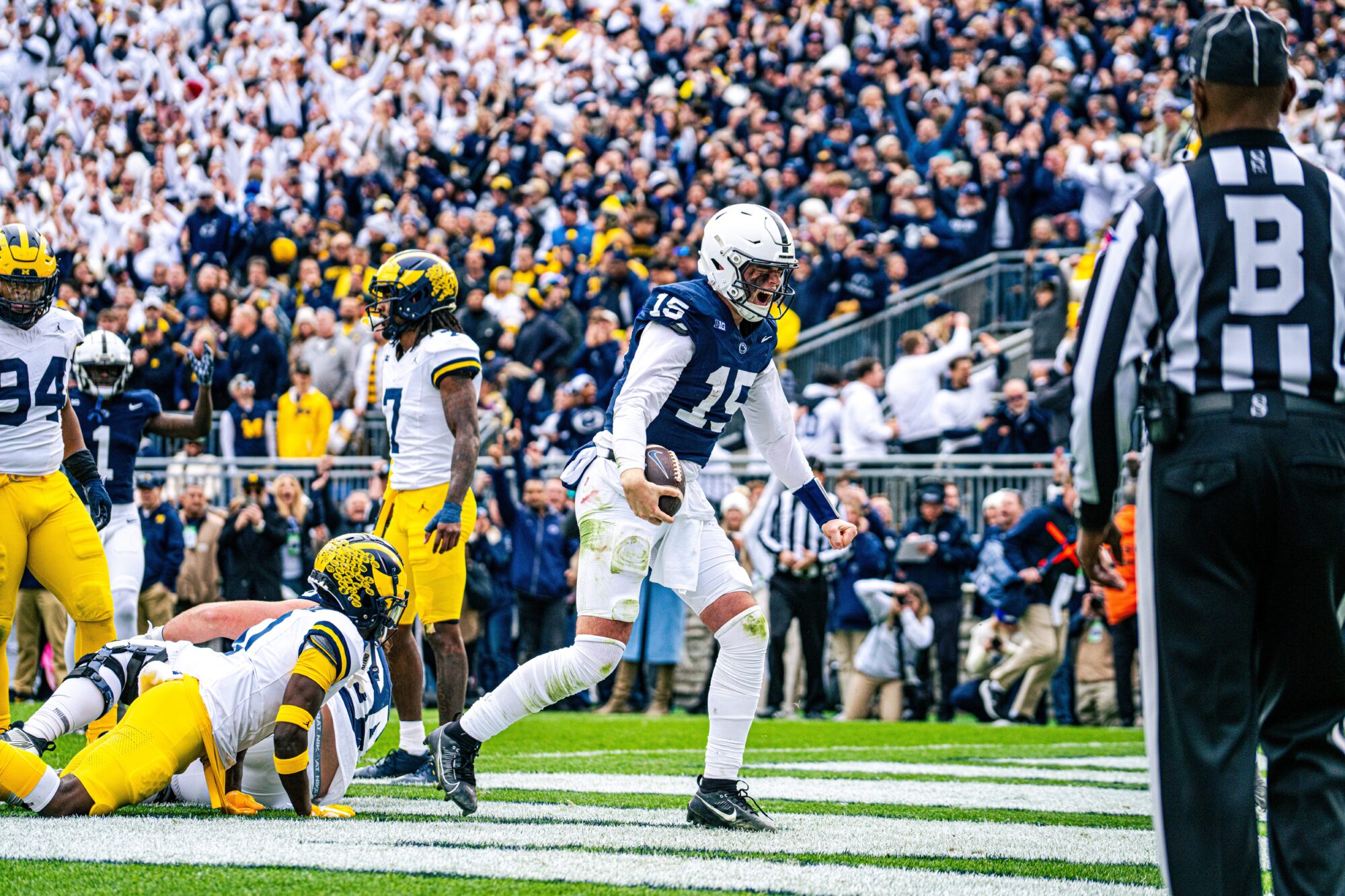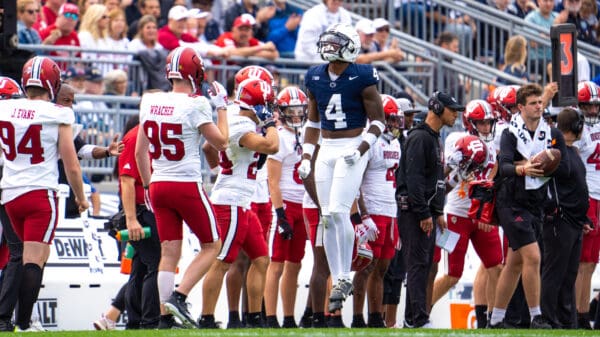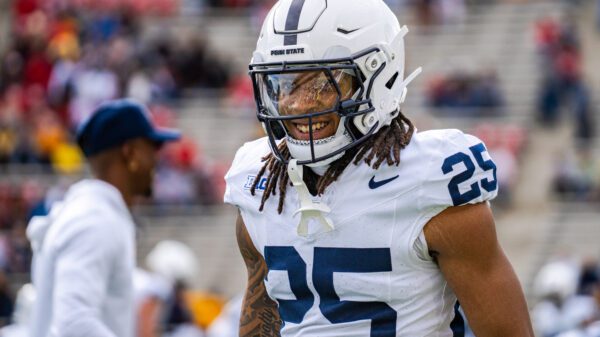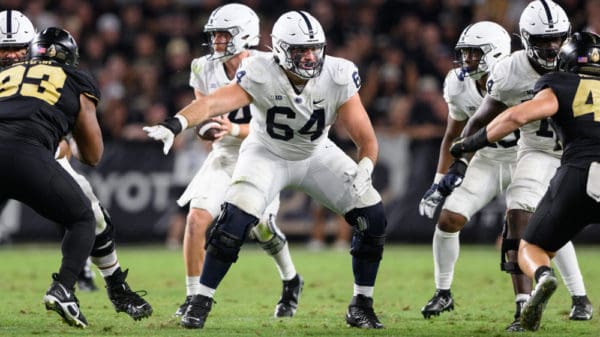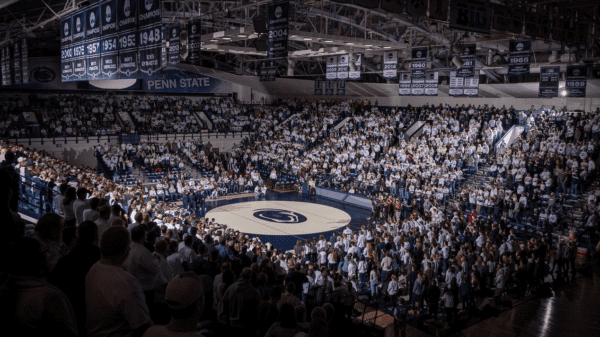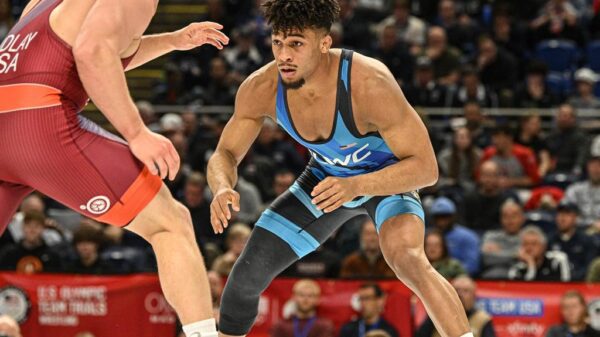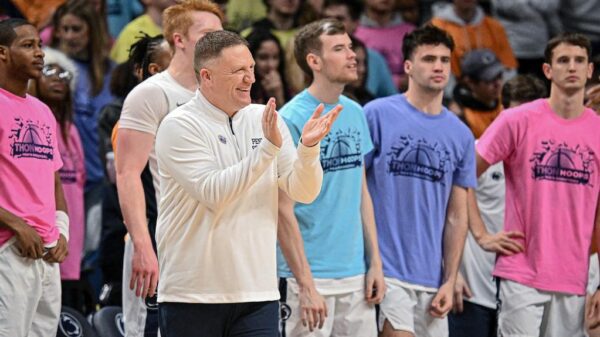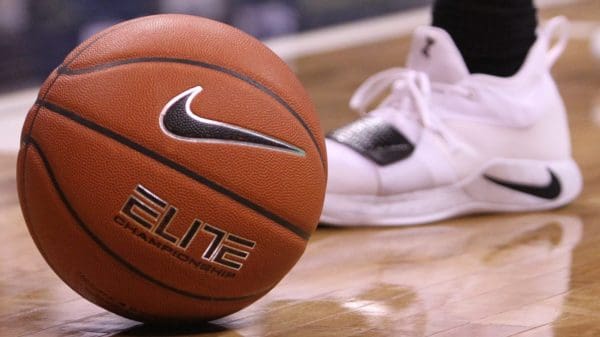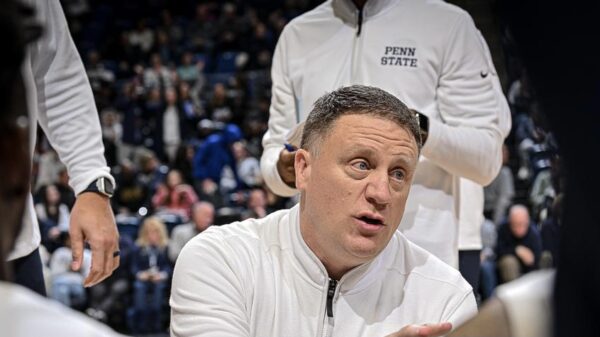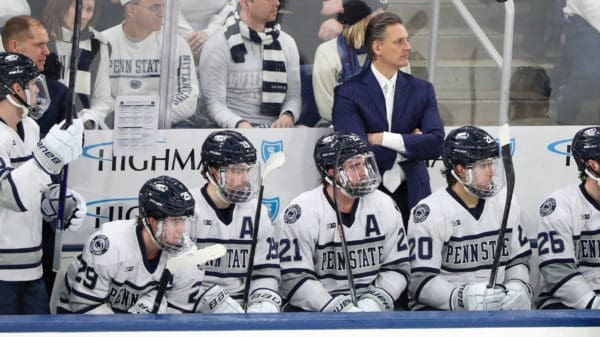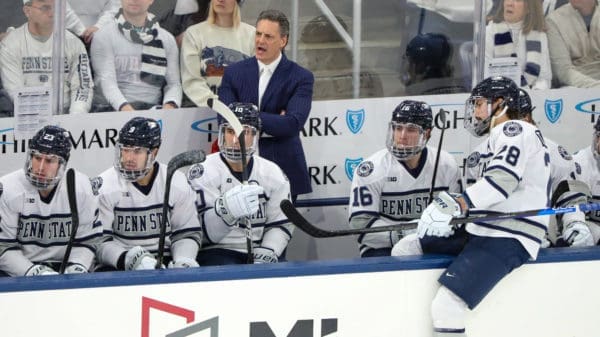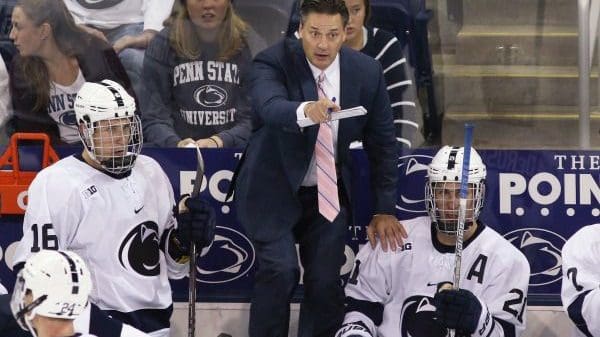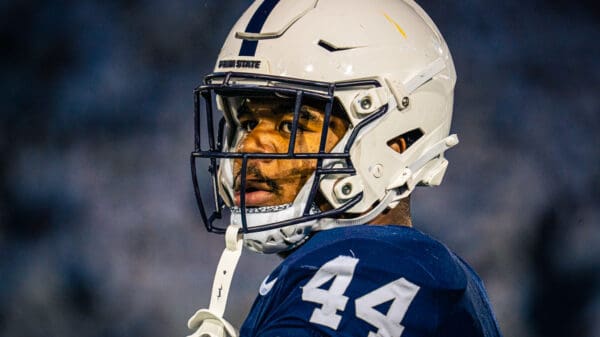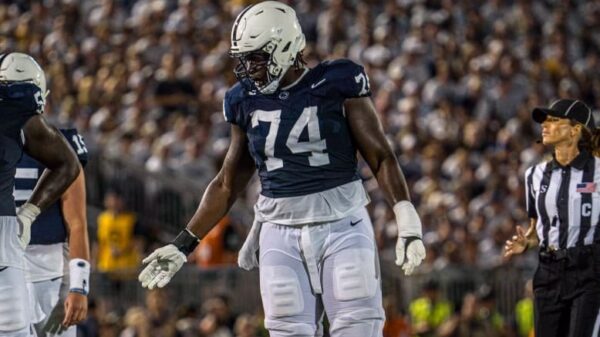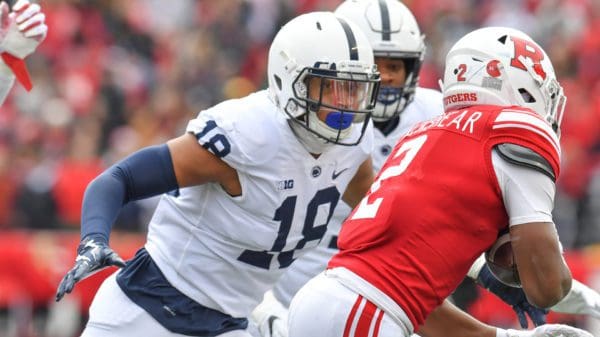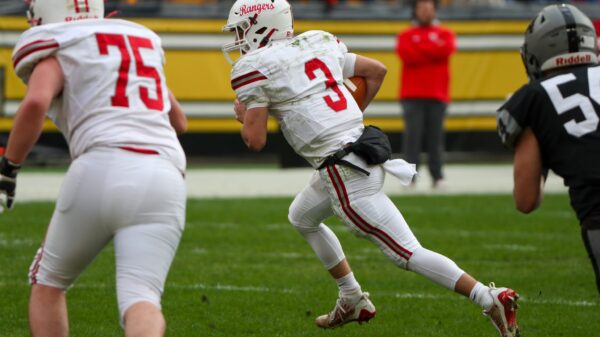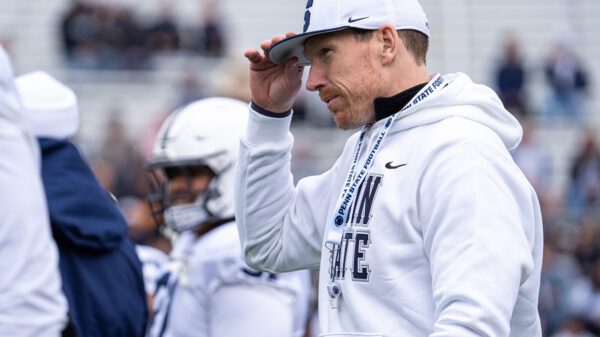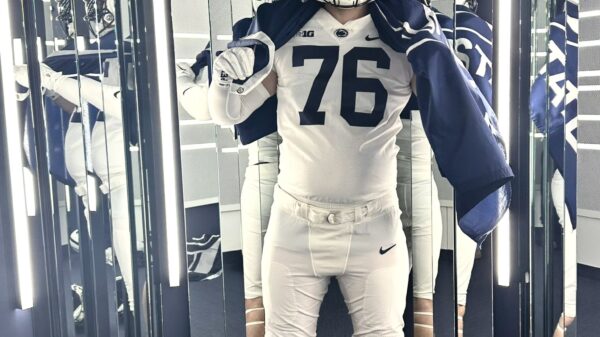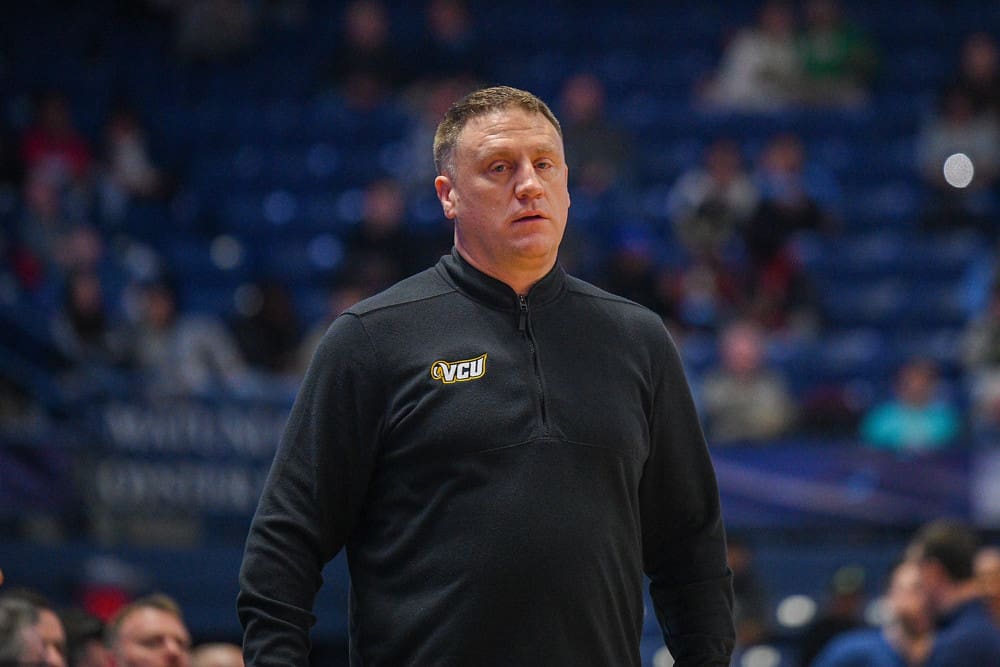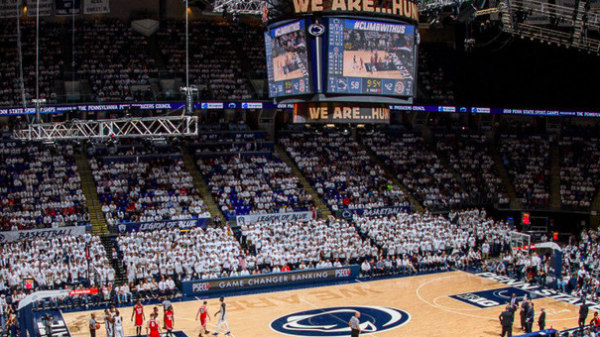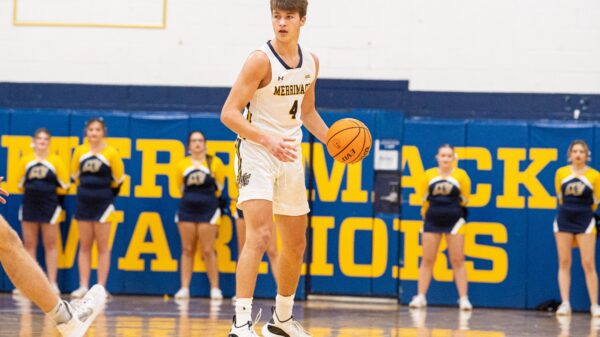Before he became the head basketball coach at Penn State or anywhere else, Mike Rhoades was a standout player.
Playing under legendary DIII coach Pat Flannery at Lebanon Valley, Rhoades helped the team to the 1994 national championship and was named the tournament’s co-outstanding player.
The following season, Rhoades was USA Today’s Division III National Player of the Year.
By the end of his career, he was a two-time All-American, a three-time all-region performer and three-time conference player of the year and was Lebanon Valley’s all-time leading scorer at the time of his graduation.
He still holds the school records for assists, steals and free-throw percentage and is one of five players to have their number retired by Lebanon Valley.
But it wasn’t always smooth sailing for Rhoades.
When Rhoades was a freshman, he recalled to reporters Friday morning before Penn State’s Coaches vs. Cancer golf outing, things “weren’t going my way on and off the court.”
Rhoades talked to his father about his struggles, and his dad gave him a simple message.
“Figure it out. You’re not going anywhere.”
Rhoades didn’t go anywhere, and his accolades, as mentioned earlier, show that he figured it out.
Now, more than a quarter century after his last college game as a player, Rhoades is a Big Ten coach in the age of the transfer portal, and players are going everywhere.
Penn State’s benefitted from this, and Rhoades understands that.
Eight of Penn State’s 12 scholarship players thus far are transfers, and although Penn State lost four players to the portal, eight is, indeed, a bigger number than four.
But Rhoades doesn’t like everything about the transfer portal, and his biggest issue is that, well, it’s just not very hard to enter it.
More than 1,720 have done it since last season ended.
“It’s great right now for us because we need to build a team, right,” Rhoades said. To make (our) roster. I think it’s a little too easy for someone just to go into it. That’s my opinion. But I understand why the NCAA has done that. Give more autonomy to student-athletes. I get that, and I respect that. I just wish there’s not so many transfers.”
“I wish we dealt with adversity a little bit better.”
Mike Rhoades understands why the transfer portal is a thing and used it to build most of his first Penn State roster. But he feels it’s a little too easy for players to transfer, and explains his thoughts here. pic.twitter.com/O6pGssKeng
— Joe Smeltzer (@joesmeltzer775) June 3, 2023
Rhoades feels that part of basketball and life is finding yourself in a difficult situation and working to conquer it.
That’s what he did back in the 90s, and he feels fewer players are as compelled to do it in the 2020s primarily because of the transfer portal.
“When something’s not going your way, you’re not playing well, you’re not getting the minutes you want or this and that, there’s something else out there, and that’s just sort of not life to me,” he said. “When you’re out of college someday, and real life hits you, you can’t run away from all that. So I just wish we would deal with some adversity on and off the court. I understand.”
“I understand the transfer portal, I get it, but I wish we dealt with adversity a little bit better, and it wasn’t so easy to transfer.”
Whether or not the transfer portal is good for college basketball overall has been and will continue to be debated.
But what’s not debatable is that Rhoades’s success in his first season at Penn State will depend on the eight guys he got from the portal.
“The transfer portal helped Penn State basketball this spring for sure,” he said.

